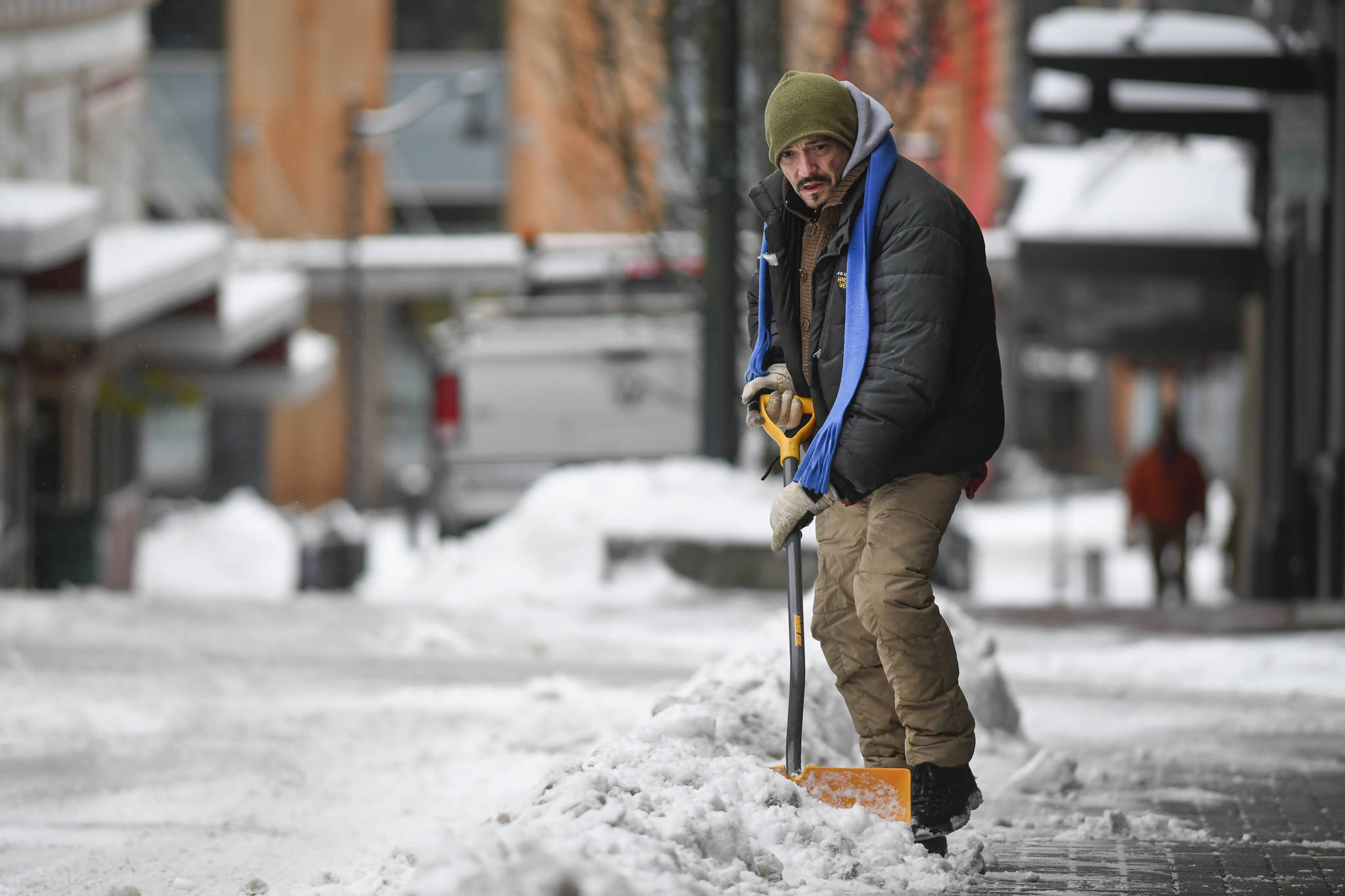More snow is coming this week.
Nicole Ferrin, meteorologist for the National Weather Service, said that flakes will fall throughout the day Thursday in what will essentially be an encore performance of Monday’s wintry weather.
“Thursday is looking like a kind of a repeat of this last one,” Ferrin said. “As of right now, it’s looking fairly similar as far as amounts. It does look like a good chance of periods of heavy snow. It’s kind of an all day thing Thursday.”
That snow will likely put the Juneau area above the monthly average snowfall for February as recorded at Juneau International Airport, which is 11.8 inches, Ferrin said. Right now, the monthly total is sitting at 11.7 inches.
“For the airport specifically, we are almost exactly at normal for the month,” Ferrin said. “We’ll probably go above that number this week.”
But what’s happening in February is at odds with the rest of this year and the better part of the past decade.
[Sen. Lisa Murkowski says Green New Deal is ‘Expansive, improbable, impossible’]
Despite a predicted above average amount of snow this month, the seasonal and annual totals are still well below average, according to National Weather Service figures.
For the season, Ferrin said, 50.6 inches of snow has been recorded at the airport. A normal total is about 69 inches.
“We’re actually below normal,” Ferrin said.
The annual snowfall average is 86.7 inches, according to 30 years of National Weather Service data from 1981-2010. So far for 2019, 35.5 inches of snow have fallen.
That is not a final number.
More snow is expected this week, and that sum will also get a boost from any snow that may fall before spring sets in as well as during October, November and December. Still, it is likely the annual total will fall short of the 30-year average, too.
“To get to 86 we got a ways to go,” Ferrin said.
[Governor looks at repealing alcohol and cannabis boards]
If there is an average amount of snowfall in the remaining months of 2019, the total would still sit about 8 inches short of average at 78.7 inches.
If totals ultimately do fall short of the 86.7-inch mark, it would be the sixth straight year with below-average snow fall, according to records at the airport.
There’s been such little snow in recent years that 8 inches below average would still be the most snow since 2013’s 99.6 inches.
Starting in 2014, every year’s snowfall total has been at least 19 inches below average — 2015, 2017 and 2018 totalled 68.2, 66.8 and 65.6 inches respectively.
In 2014 only 51.1 inches were recorded and 2016 saw a paltry 27.2 inches.
Ferrin said based on forecast models, after Thursday it could be a while before there is another significant amount of snow to add to 2019’s totals.
“After Thursday, we go back to a northerly, cooler flow pattern, and I don’t see another sign of precip in any of the models,” Ferrin said. “This Thursday event could be it for the month total.”

